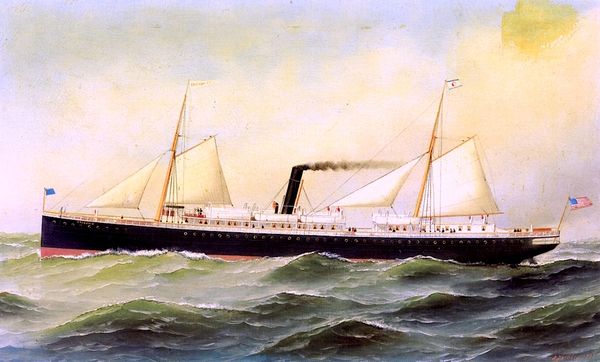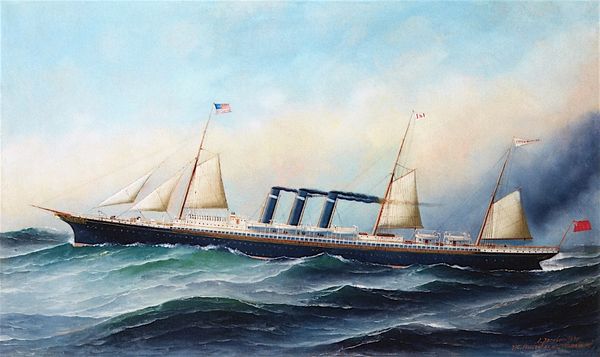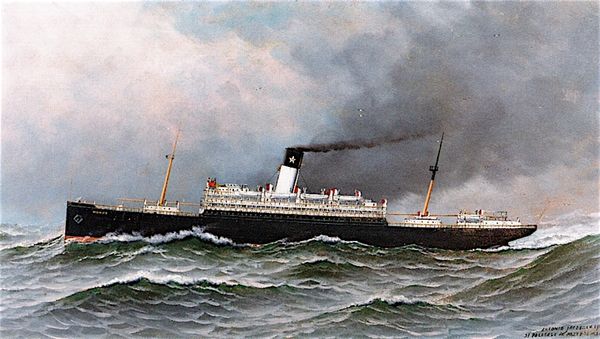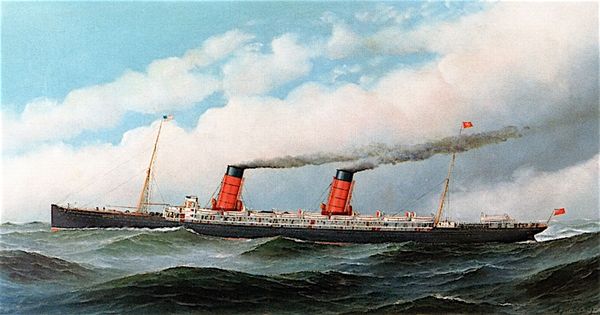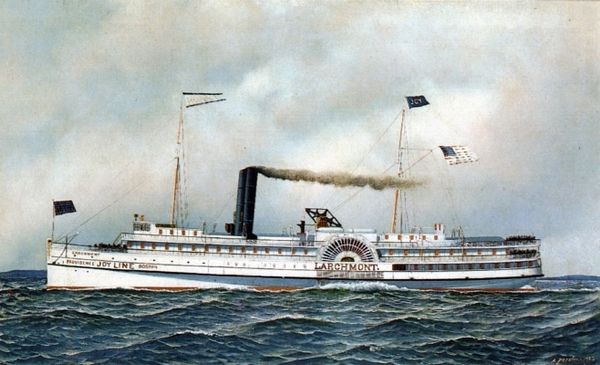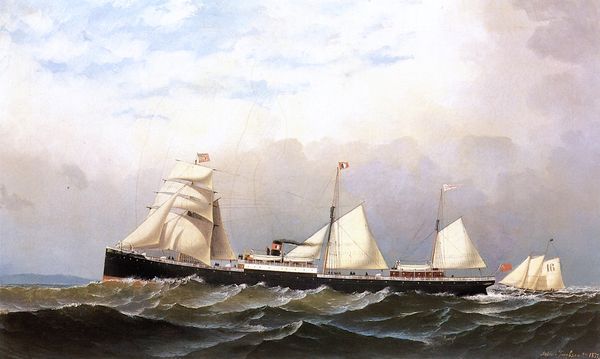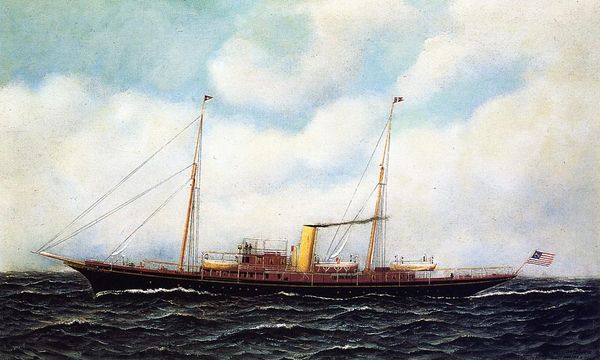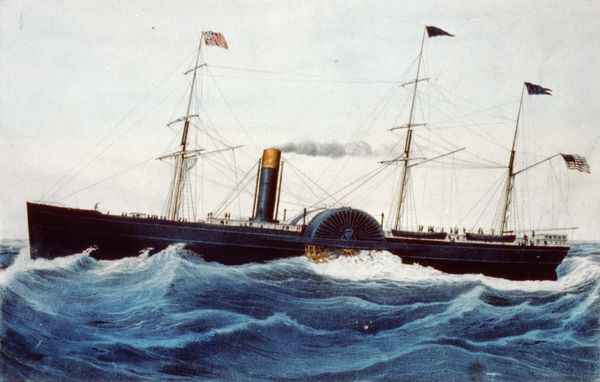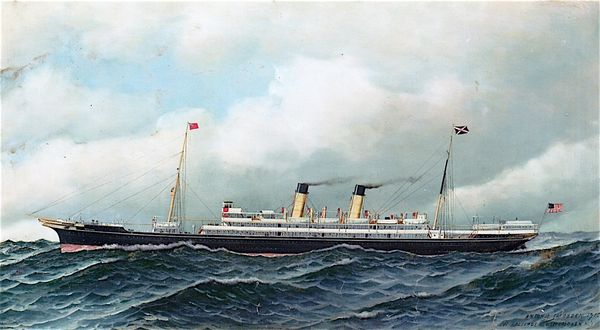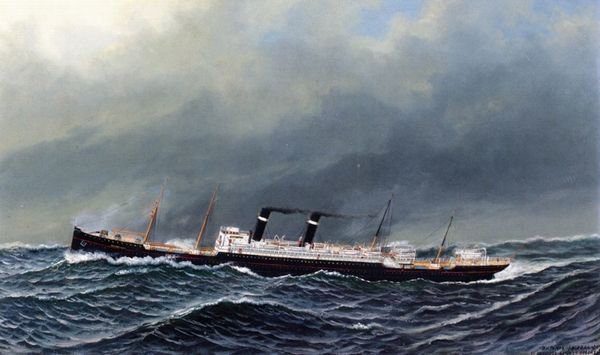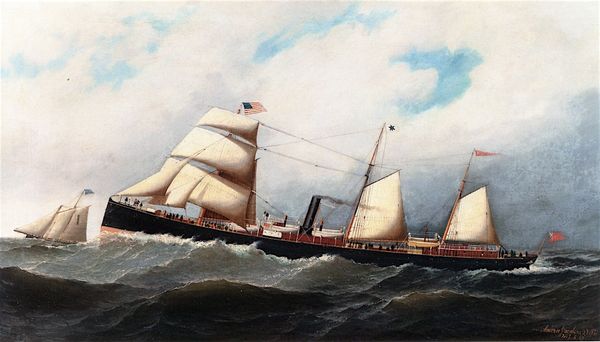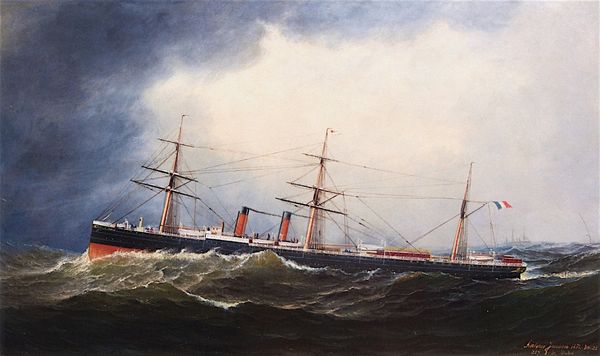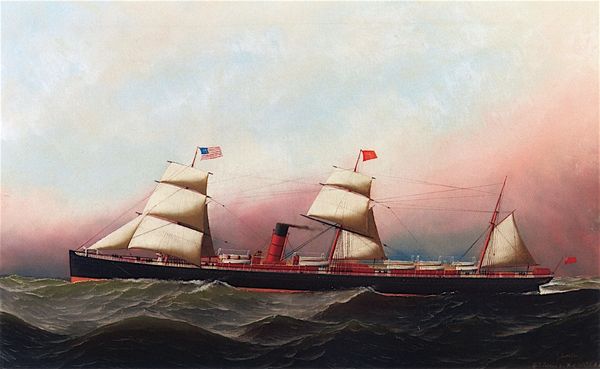
Copyright: Public domain
Editor: Here we have Antonio Jacobsen's "The S. S. Orizaba at Sea," an oil painting from 1895. The ship looks so stately against the waves, almost like a celebrity posing for a portrait. How do you interpret this work? Curator: Well, beyond its surface appearance as a maritime scene, it's important to consider the S.S. Orizaba as a symbol of transnational movement and exchange during that period. Whose movement was facilitated, and at what cost? Jacobsen often focused on the commercial shipping industry. It's worth examining who benefited from this burgeoning industry and who faced exploitation or displacement as a result. Editor: So, it’s not just about a ship; it's about power dynamics? Curator: Exactly. We need to critically engage with the narrative of progress and expansion. This wasn’t simply about moving goods efficiently. The art becomes a space to question the dominant narratives. What’s being transported, who is onboard, who is excluded, and what were the labor practices? What does maritime labor look like, historically and now? These ships played a role in colonization and resource extraction too. How does that knowledge change our perspective on this serene painting? Editor: I hadn't considered those aspects. It makes you wonder about all the unseen stories connected to this ship and others like it. Curator: Precisely. Looking at this, we’re invited to reflect on the broader socio-political contexts, allowing for a much more complex understanding of both the artwork and the era. Editor: Thanks, that really changes how I see it! It is a lot more than just an image of a boat on the sea!
Comments
No comments
Be the first to comment and join the conversation on the ultimate creative platform.

